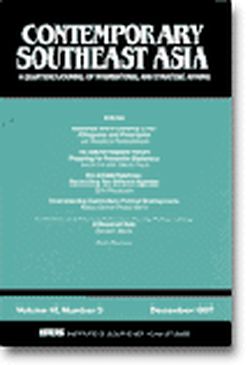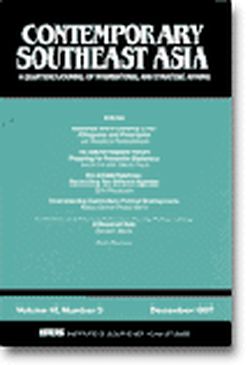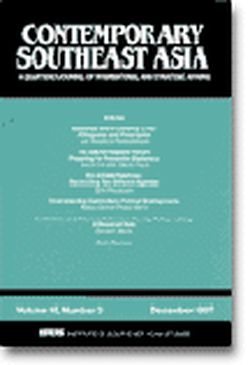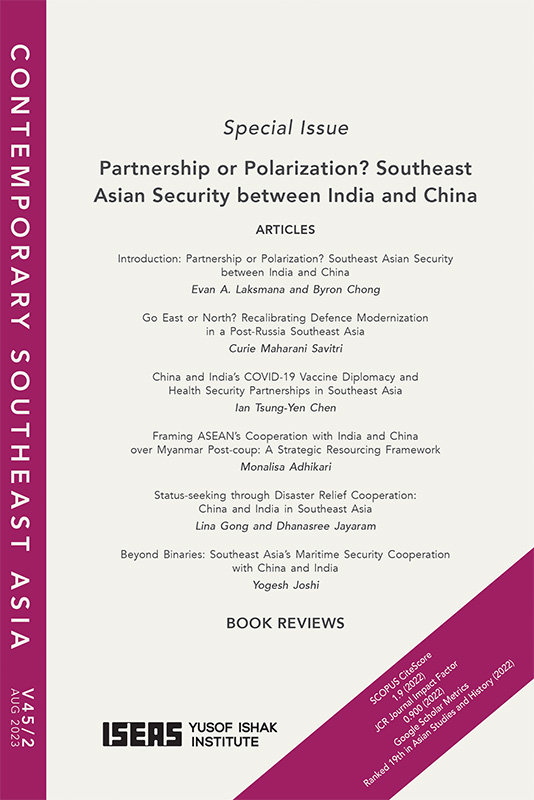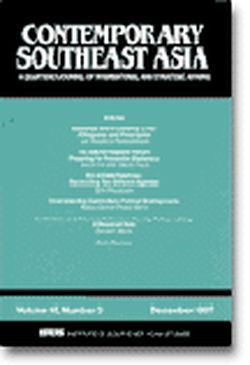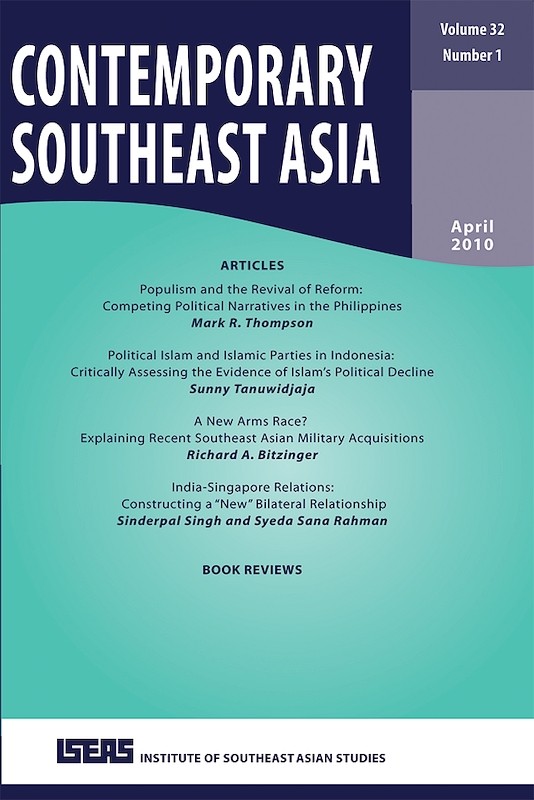Contemporary Southeast Asia: A Journal of International and Strategic Affairs Vol. 10/3 (Dec 1988)
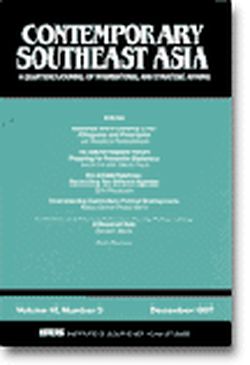
Date of publication:
December 1988
Number of pages:
122
Code:
CS10/3
Contents
-
Preliminary pages
- ARTICLES
-
Arms Control in Southeast Asia: A Review of the Debate, by Lew Eng Fee, author see abstractThis paper examines the various arguments that have been put forward regarding arms control for Southeast Asia. It begins with a look at the discussion on the feasibility and relevance of the concept of arms control, which originated in the East-West nuclear environment, to the developing world at large. It then focuses on Southeast Asia, outlining the differences between those who argue that arms control is necessary in a rapidly militarizing region, and those who believe it to be impractical owing to certain local factors. The last section summarizes the debate between the two sides, highlighting the most salient points of argument as worthy of further study.
-
Arms Proliferation Issues in ASEAN: Towards a More "Conventional" Defence Posture?, by Amitav Acharya, author see abstractThe armed forces of the ASEAN countries have embarked upon a major drive to modernize their air and naval capabilities. But does this reflect a shift in emphasis from internal security operations to conventional warfare? This paper finds that the air and naval forces of four ASEAN countries are moving beyond internal security and coastal defence roles. A number of factors have affected this transition, especially the declining credibility of the Western strategic umbrella in the region, and the emergence of new security concerns, including the protection of maritime economic zones that are increasingly vital to the ASEAN countries. These concerns might have contributed more than just the perceptions of a conventional external military threat to the apparent shift in the defence posture of the ASEAN countries.
-
A Brief Survey of Arms Production in ASEAN, by Yoshinori Nishizaki, author see abstractThis paper is divided into two parts. The first is mainly concerned with a discussion of some of the main features of arms production among ASEAN countries. It looks at the types of weapons produced, and finds that technology dependence has emerged in the course of accelerated arms production (with the possible exception of Thailand), although the level of import substitution is generally on the rise. It goes on to discuss the export performance of the two leading arms exporters, Indonesia and Singapore, followed by a suggestion that the extent of government involvement in arms production could partially account for the disparities in the level of production and export that exists among the ASEAN states. The second part argues that the decline or stagnation of demand for arms and the economic capability to produce weapons will increasingly pose difficulties in sustaining and developing defence industries, and suggests co-production of arms as one possible solution.
-
Arms Procurement Policies in ASEAN: How Much is Enough?, by Bryan Evans, author see abstractThis paper aims to establish the concept of a framework within which the arms procurement patterns of the ASEAN members can be evaluated. There is a danger that existing differences and areas of potential conflict within ASEAN may be exacerbated by an escalation of arms transfers into the region. Consequently, it may be possible to achieve a certain level of understanding and co-operation within ASEAN if there was a useful framework for assessing the nature of arms purchases which will have to be defined as including both arms procurement and defence industrialization. It is also proposed that the term ``self-sustainment" is a more meaningful one than ``self-sufficiency" to describe the optimum level of procurement within rational strategic and economic boundaries. Lastly, threat perception determines defence spending which, in turn, is the product of the imperatives of national survival and nation-building.
-
A Six-Power Defence Arrangement in Southeast Asia?, by K U Menon, author see abstractThere are indications that Brunei is seriously considering the option of joining the Five-Power Defence Arrangements (FPDA). The FPDA is a loose multilateral defence umbrella which stipulates that the member countries will consult each other in the event of an externcdly organized or supported threat. For Brunei, a country overly concerned about its own vulnerabilities, the FPDA provides an additional shield of defence. It also enhances opportunities for multilateral defence co-operation and, more importantly, provides a framework for the continued British Gurkha presence in Brunei long after Britain returns Hong Kong to China when the future of the British Gurkhas becomes a critical issue. However, Brunei's membership of the FPDA might be viewed with concern by its immediate neighbour, Indonesia, which has taken a consistent stand against any compromise on non-aligrunent and any collective militarizing of the ASEAN states. In any case, membership of FPDA could also be a drain on Brunei's manpower resources but, in the long run, it will undergird ASEAN regional co-operation and contribute to a growing sense of shared mutual security in the region.
- BOOK REVIEWS
-
BOOK REVIEW: The State in Burma by Robert H Taylor, by Gordon P Means, author
- DOCUMENTATION
-
DOCUMENTATION: U.S., Philippines Reach Agreement on Bases
-
DOCUMENTATION: Mikhail Gorbachev's Speech on Foreign Policy

